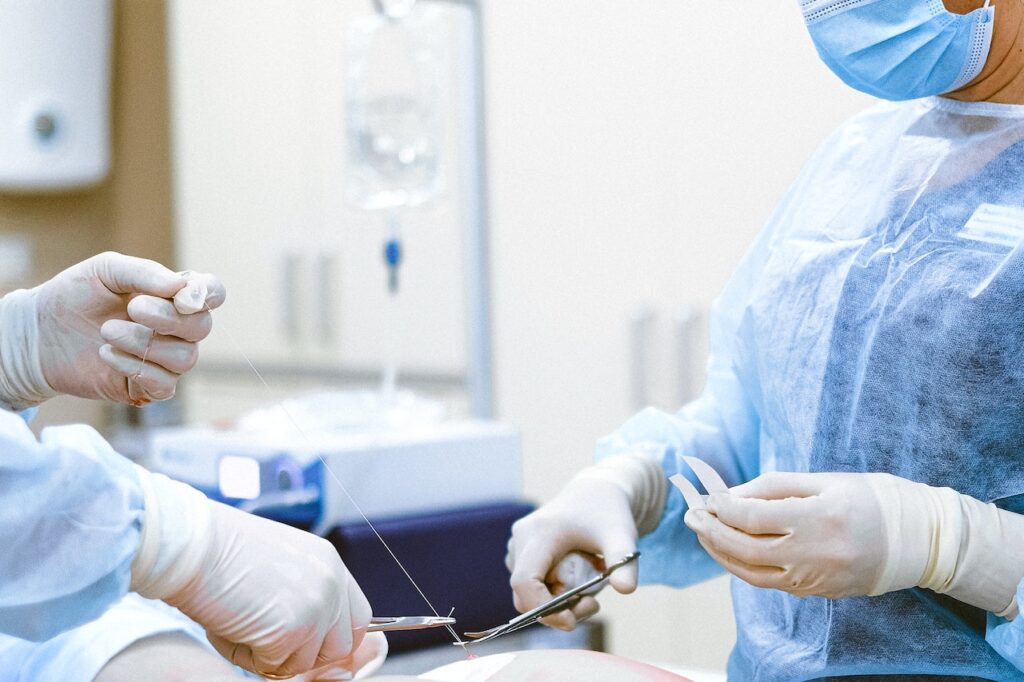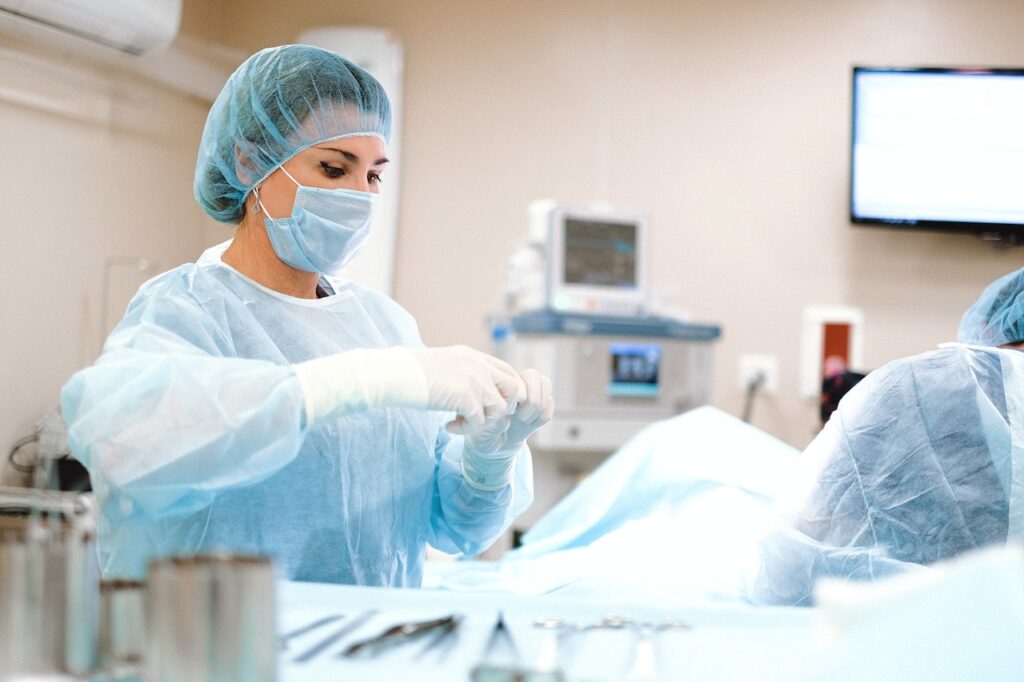ACL surgery is a common procedure that many athletes and active individuals undergo to repair a torn or damaged anterior cruciate ligament. While the surgery can be highly effective in restoring function and reducing pain, it can also come with a hefty price tag. Understanding the cost of ACL surgery is an important consideration for anyone considering the procedure.
The cost of ACL surgery can vary widely depending on a number of factors, including the location of the surgery, the surgeon’s experience and reputation, and the type of surgery performed. In general, the cost of ACL surgery can range from several thousand dollars to tens of thousands of dollars. For many individuals, the cost of surgery can be a significant financial burden, and it is important to carefully consider the potential costs and benefits of the procedure before making a decision.
Key Takeaways
- ACL surgery is a common procedure used to repair a damaged anterior cruciate ligament.
- The cost of ACL surgery can vary widely depending on a number of factors, including location, surgeon experience, and type of surgery.
- The cost of ACL surgery can be a significant financial burden for many individuals, and it is important to carefully consider the potential costs and benefits of the procedure before making a decision.
Understanding ACL Surgery
When an individual tears their anterior cruciate ligament (ACL), they may require ACL reconstruction surgery to restore the function of the knee. This surgery involves replacing the damaged ligament with a graft, typically taken from the patient’s own body or a donor.
The Procedure
ACL reconstruction surgery is typically performed under general anesthesia, and the surgeon may use either minimally invasive or open surgery techniques. During the surgery, the surgeon will make an incision in the knee and insert an arthroscope, a small camera that allows them to visualize the inside of the joint.
The surgeon will then make small incisions to insert instruments to remove the damaged ligament and prepare the bone for the graft. The graft is then secured in place with screws or other fixation devices.
Minimally Invasive Vs Open Surgery
Minimally invasive ACL reconstruction surgery involves smaller incisions and less tissue disruption than open surgery. This can result in less pain, faster recovery times, and reduced scarring. However, not all patients are candidates for minimally invasive surgery, and the surgeon may need to switch to open surgery during the procedure if necessary.
Open surgery involves a larger incision and more tissue disruption, but it may be necessary for patients with more complex injuries or who require additional procedures.
Overall, the specific procedure used for ACL reconstruction surgery will depend on the individual patient’s needs and the surgeon’s expertise. Arthroscopic surgery, which uses the arthroscope to visualize and treat the joint, is a common technique used in ACL reconstruction surgery.
In summary, ACL reconstruction surgery is a common procedure used to treat ACL injuries. The surgery may be performed using minimally invasive or open techniques, depending on the patient’s needs. Arthroscopic surgery is a commonly used technique in ACL reconstruction surgery, allowing for visualization and treatment of the joint.
Who Needs ACL Surgery
ACL surgery is a common procedure for those who have suffered an ACL injury. The anterior cruciate ligament (ACL) is a crucial ligament that connects the thigh bone to the shin bone, and it is responsible for stabilizing the knee joint. When the ACL is torn, it can lead to instability and pain in the knee, making it difficult to perform daily activities.
Sports and ACL Injuries
Athletes who participate in contact sports like football, basketball, and soccer are at a higher risk of suffering an ACL injury due to the sudden stops, pivots, and changes in direction that are common in these sports. However, ACL injuries can also occur in non-contact sports like running and skiing.
Diagnosis
To diagnose an ACL injury, a doctor will typically perform a physical examination of the knee and may order X-rays or an MRI to confirm the diagnosis. In some cases, a doctor may also perform a test called the Lachman test, which involves pulling the tibia forward to assess the stability of the knee joint.
In general, ACL surgery is recommended for individuals who have a complete ACL tear or a partial tear with significant instability in the knee joint. However, the decision to undergo surgery ultimately depends on the individual’s goals, lifestyle, and overall health.
Recovery and Rehabilitation
After ACL surgery, recovery and rehabilitation are crucial to ensure proper healing and a successful outcome. The recovery time can vary depending on the individual’s health and the extent of the surgery. It is important to follow the surgeon’s instructions and attend all follow-up appointments to monitor progress.
Physical Therapy
Physical therapy is an essential part of the recovery process after ACL surgery. It helps to restore range of motion, strengthen the muscles, and improve flexibility. The physical therapist will work with the patient to develop a customized rehabilitation plan based on their specific needs.
The physical therapy sessions may include exercises to improve strength and flexibility, manual therapy to reduce pain and improve joint mobility, and modalities such as ice or heat therapy to reduce swelling and inflammation. It is important to attend all physical therapy appointments and follow the therapist’s instructions to ensure a successful recovery.
Return to Work and Sports
Returning to work and sports after ACL surgery can take several months. The individual’s activity level and the type of work or sport they participate in will determine when they can safely return. It is important to gradually increase the activity level and avoid any strenuous activities that could cause further injury.
The surgeon and physical therapist will determine when it is safe to return to work and sports. They may recommend a gradual return to activity, starting with low-impact exercises and gradually increasing the intensity and duration. It is important to listen to the body and not push too hard too soon.
In conclusion, recovery and rehabilitation are essential after ACL surgery. Physical therapy and a gradual return to activity are crucial to ensure proper healing and a successful outcome. It is important to follow the surgeon’s instructions and attend all follow-up appointments to monitor progress.
Risks and Complications
Short-Term Risks
Like any surgery, ACL surgery carries some risks and potential complications. Some of the short-term risks associated with ACL surgery include pain, swelling, and bleeding. Patients may also experience blood clots, which can be serious if they travel to the lungs or other parts of the body.
Infection is another potential risk of ACL surgery. While rare, infection can occur in the joint or at the incision site. Symptoms of infection include fever, redness, and swelling around the incision site, and increased pain.
Long-Term Complications
While most patients recover fully from ACL surgery, there are some potential long-term complications. One of the most common is weakness in the knee, which can persist for several months after surgery. Patients may also experience numbness or tingling in the leg or foot.
Degeneration of the knee joint is another potential long-term complication of ACL surgery. This can lead to osteoarthritis, a painful condition in which the cartilage in the joint wears away over time. Graft failure is another possible complication, in which the new ligament fails to heal properly or becomes loose.
Growth plate injury is a potential complication for children and adolescents who have ACL surgery. The growth plate is a layer of cartilage at the end of the bone that helps bones grow. Injury to the growth plate can lead to deformity or stunted growth.
It is important to note that while these complications are possible, they are relatively rare. Most patients recover fully from ACL surgery without experiencing any significant complications. However, patients should be aware of the potential risks and discuss them with their surgeon before undergoing surgery.
Cost of ACL Surgery
ACL surgery is a common procedure that is performed on individuals who have sustained an injury to their anterior cruciate ligament. The cost of ACL surgery can vary significantly depending on several factors. In this section, we will discuss the factors that influence the cost of ACL surgery, as well as insurance coverage and out-of-pocket costs.
Factors Influencing the Cost
The cost of ACL surgery can be influenced by several factors, including:
- Geographic location: The cost of ACL surgery can vary depending on the location of the surgery center.
- Type of surgery: The cost of ACL surgery can vary depending on the type of surgery that is performed. For example, a traditional ACL surgery may be less expensive than a minimally invasive ACL surgery.
- Facility fee: The facility fee is the cost of using the surgery center or hospital. This fee can vary depending on the location and type of facility.
- Anesthesia: The cost of anesthesia can vary depending on the type of anesthesia that is used.
- Pre-operative testing: The cost of pre-operative testing, such as an MRI, can add to the overall cost of ACL surgery.
Insurance Coverage and Out-of-Pocket Costs
Insurance coverage can significantly impact the cost of ACL surgery. Most insurance plans will cover the cost of ACL surgery, but the amount of coverage can vary depending on the plan. In addition to insurance coverage, there may be out-of-pocket costs associated with ACL surgery, such as copays, co-insurance, and deductibles.
Individuals who have a flexible spending account (FSA), health savings account (HSA), or health reimbursement account (HRA) may be able to use these accounts to pay for some or all of the out-of-pocket costs associated with ACL surgery.
Overall, the cost of ACL surgery can vary significantly depending on several factors, including geographic location, type of surgery, facility fee, anesthesia, and pre-operative testing. Insurance coverage and out-of-pocket costs can also impact the cost of ACL surgery. Individuals who are considering ACL surgery should discuss the cost and insurance coverage with their healthcare provider and insurance company.
Conclusion
In conclusion, the cost of ACL surgery can vary depending on various factors such as the type of surgery, the location, and the healthcare provider. It is important to note that the cost of surgery is not the only factor to consider when it comes to treating knee injuries or pain. Other factors such as recovery time, rehabilitation, and potential complications should also be taken into account.
Patients should always consult with their healthcare provider to determine the best treatment plan for their specific needs and circumstances. It is also important to consider non-surgical options such as physical therapy and pain management before undergoing surgery.
While ACL surgery can be expensive, it can also be a necessary and effective treatment for knee injuries and pain. Patients should weigh the potential benefits and risks of surgery before making a decision. It is also important to have a clear understanding of the cost and potential insurance coverage before undergoing any medical procedure.
Overall, ACL surgery can be a costly but effective treatment option for knee injuries and pain. However, patients should always consult with their healthcare provider and consider all treatment options before making a decision.
Frequently Asked Questions
What is the average cost of ACL surgery in Texas?
The average cost of ACL surgery in Texas ranges from $10,000 to $20,000. The cost may vary depending on the type of surgery, the surgeon’s experience, and the hospital’s location.
What are the factors that affect the cost of ACL surgery in California?
The cost of ACL surgery in California is affected by various factors such as the type of surgery, the surgeon’s experience, the hospital’s location, and the patient’s insurance coverage. The cost may range from $15,000 to $30,000.
What is the typical recovery time after ACL and meniscus surgery?
The typical recovery time after ACL and meniscus surgery is around 6 to 9 months. However, the recovery time may vary depending on the patient’s age, overall health, and the extent of the injury.
Is ACL reconstruction covered by insurance?
ACL reconstruction is usually covered by insurance. However, the coverage may vary depending on the insurance plan and the patient’s deductible. Patients are advised to check with their insurance provider to determine their coverage.
What is the cost of anesthesia for ACL surgery?
The cost of anesthesia for ACL surgery is usually included in the overall cost of the surgery. However, the cost may vary depending on the type of anesthesia used and the duration of the surgery.
Is ACL repair worth the cost?
ACL repair is considered a worthwhile investment for patients who want to regain their mobility and quality of life. However, patients should carefully consider the cost and potential risks associated with the surgery before making a decision.





